#Polish software house
Explore tagged Tumblr posts
Text
polish software house
Polish software house have become synonymous with innovation, quality, and reliability in the global technology landscape. While we cannot provide an exact count of these establishments, there are over 2,000 software development companies in Poland as of my last knowledge update. This number is expected to have grown since then, underlining the country's position as a top choice for outsourcing software development needs.
0 notes
Note
I'd adore more of your wiress and beetee hcs if you had any more to share maybe
thank you so much for this ask anon i love any excuse to talk about them. i can’t tell if you want just beetee and wiress or them separately but i’ll give you both because i have lots of thoughts.
Beetee:
he was born on july 23rd, 21 ADD.
he has five siblings, two brothers and three sisters. he’s the oldest. in order they are: adeline (six years younger), roent (eight years younger), tera and ruther (ten years younger), and dayta (thirteen years younger).
he grew up really poor, his family barely making ends meet. his father died when he was fourteen and his mother kind of lost herself after that.
because of that, he became his siblings only real parental figure when he was really young.
his favorite color is blue.
he won the 40th at nineteen. it was the oldest a victor ever was at the time of their victory.
he dismantled an old computer he found in the trash and then put it back together when he was six.
he’s either still up at three in the morning or is out at nine pm. there’s no in between.
he also wakes up really early every single morning. wiress thinks he’s insane.
he’s actually pretty tall.
he knows how to ice skate.
he prefers cold weather over warm weather.
he loves the snow.
he’s a dog person.
he’s really good with kids.
Wiress:
she was born on november 6th, 29 ADD.
she has an older sister named barbara (four years older).
she’s polish and her last name is lisiecki.
she’s an acrobat and singer.
her family was richer than most residents of three. her father was a software developer until he passed (i have a lot of dead dads in my hcs). her mother ran a sort of theatre group/circus to entertain capitol and three citizens. it’s where wiress learned acrobatics.
her hair is naturally curly.
she won the 48th when she was eighteen.
she’s really good with crowds but hates one-on-one talking.
her favorite color is lilac.
she had a cat before she won named fleur. fleur went on to have three kittens named iris, leni, and luna.
she loves the smell of lavender.
she is not a morning person at all. she can barely function in the mornings.
she loves both coffee and tea.
she has a giant sweet tooth.
she cannot cook. like seriously. last time she tried she started a fire and almost burnt her house down.
she was always a naturally curious person. as a child she snuck into the woods surrounding three and took walks for hours. it scared her mother senseless every time she up and disappeared and she always sent barbara out to go find her.
her district token was a woven purple bracelet her sister made for her when she was younger.
Wiress and Beetee:
this is basically canon but they can talk with their eyes/just understand each other without saying anything. the other victors have made a game out of figuring out what they’re talking about.
beetee’s token was his glasses for both of his games, so for the 75th he took his wedding band and added two silver stripes on the sides out of the metal.
most of the victors have absolutely no idea what their relationship is. like some of them think they’re just really good friends, some of them think they’re dating casually, and some are like, “no they’ve been married for a decade.”
he was her mentor. the 48th was the only year where both tributes were from “richer families” (i.e. three’s version of merchant families). atlas, the other victor from three, came from a merchant family but beetee didn’t and there’s a lot of animosity between the poorer and richer people in three (similar to twelve but if like everyone acted like mrs. mellark) so he was really worried that wiress was going to be rude or disrespectful. and then he meets the sweetest eighteen year old he’s ever met who sings for fun and hums to herself when she’s anxious. safe to say he was surprised.
beetee really hates explaining stuff so when wiress comes along they can sometimes forget they have to explain stuff to people and they won’t get it if they give them The Look even though they both get what that means. they don’t even mean to but they can be hanging out with anyone and make them feel like they’re third-wheeling.
bonus:
Beetee adjusts his glasses as he squints at the computer in front of him. “Our brains are made of the same wires.”
Wiress looks over at him, a small smile playing on her lips. “That’s genuinely the most romantic thing you have ever said to me.”
(this is 100% going in a fic but why do i have the best ideas for random lines at one in the morning like why can’t inspiration hit at a normal time ffs)
sorry this took a minute for me to post <3 i hope you like these! anyway, again anon ilysm for this ask seriously i love love love talking about them.
#dayne talks#dayne answers#dayne needs to be told to shut up#new tag#so yeah there are (most of) my beetee and wiress hcs. i have some more but those are little surprises for fics.#as you can tell i think abt them a normal amount#thg#the hunger games#wiress#wiress thg#beetee latier#thg headcanons#beetress#dayne’s beetee tag#dayne’s wiress thoughts (TM)
25 notes
·
View notes
Text
4 Seasons Back Yard Remodel + Crystal Yard
My 4 seasons remodels of the Petz 5 Back Yard are now available for download! And because I went on a bit of a side-quest, I’ve also made a bonus version, a fantasy, crystal back yard!
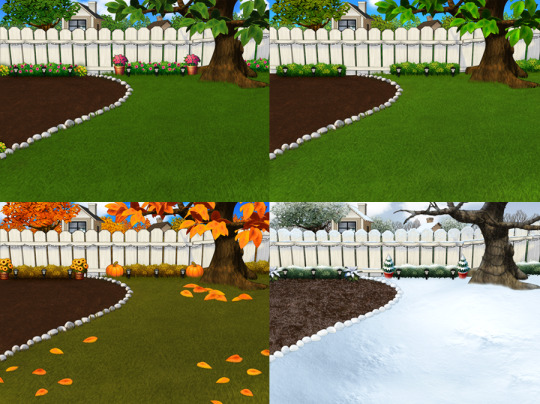
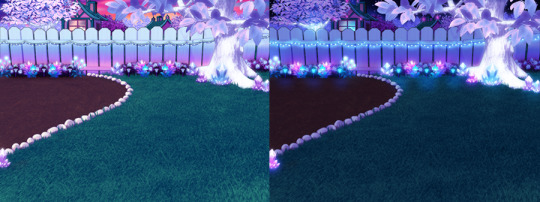
You can read my creator's notes below:
I somewhat wonder if it's fair to criticize the original Petz 5 playscenes too harshly. It's possible that the development team faced tight deadlines or budget constraints, factors that may not have been entirely within their control. However, regardless of the circumstances, the end result was a disappointingly sloppy product, and it's difficult to ignore some of the glaring flaws. While I can understand that the developers were working with dated software, there are certain flaws that can't be attributed to software limitations. Rather, they seem to reflect a clear lack of attention to detail. Here's what I mean.
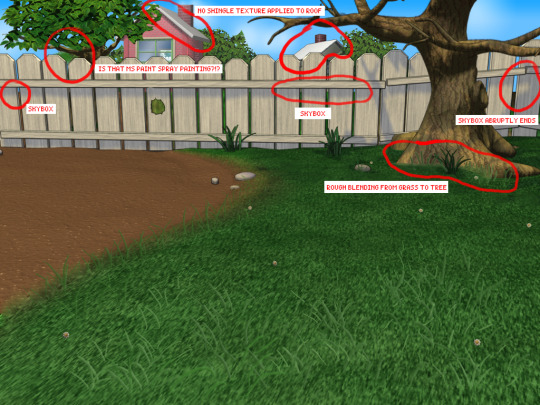
The more you look at it, the harder it is to decide which flaw is the worst. The blatant MS paint spray paint "touch-up" in the upper left, that there was no effort put into blending in the skybox, or that they neglected to add textures to the roof.
Alright, enough ranting there. None of this is to say my playscenes are perfect either, but they were a labor of love and I hope that this is evident in the final results.
SPRING
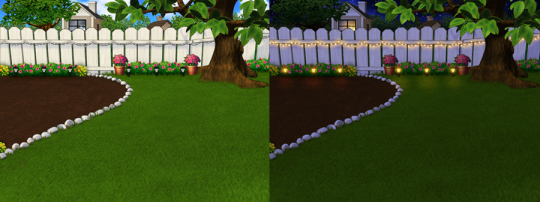
I smoothed out the grass texture to give it a more velvety, manicured lawn appearance. I brightened up the dingy looking fence to a more brighter white. The original playscene had a hole in the fence, and while it might add "character", I opted to cover over it for a more polished look. I added bushes behind the fence to cover up the skybox and to conceal the bottom of the houses.

Speaking of houses. Wow these needed a big work-up. The texture work (or lack of) on these is just bad. I'm no expert in house construction, but even mostly-brick houses will have some accents like trims to break up the monotony of a fully-brick façade.
Because of how fuzzy the brick texture is in the original, I drew in the mortar lines of the bricks to enhance the texture. I added roof shingles, siding, and trim boards to the house to make it look more like a typical suburban house. Despite these edits, it's still not a "great" house - the way it looks through the windows, it looks like the house is one room lol. I wish I could put better houses in the backdrop but because Tinker doesn't allow me to edit the animated blinds, I'm constrained to keeping them the shape that they are. Oh well. We can use our imagination.
I added landscaping rocks to make the flower bed look nicer. I also added some landscaping details like bushes, garden lights, and string lights for ambiance.

[ Enlarged picture of the garden light I made ]
I also worked to improve the skyboxes in all 4 seasons of the of the Back Yard playscenes. It would be lengthy to get into the details of all that but here's a before and after of the night skybox. You got to love them high-quality MS paint stars in the original.

SUMMER
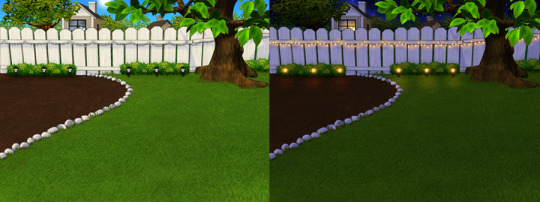
I had a hard time with the summer one because it was hard to come up with ways to make it look different from the spring version. I did make the grass, bushes, and tree leaves slightly more vibrant. Originally I had some flowers by the bushes but I just wasn't really happy with them. At the last minute, I made the decision to remove them entirely. This makes the playscene a little more "plain" but I think some people may want a more "plain", undecorated version so that they can dress it up how they want with toyz.
FALL
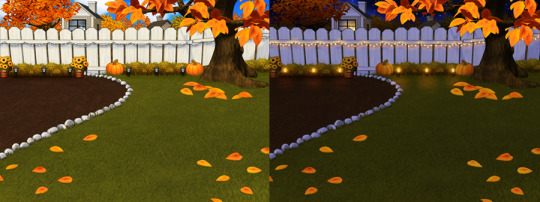
Fall is my favorite season, so this was a joy to make. I toned down the color of the grass and added fall landscaping motifs. Recoloring the tree's leaves was done by using Photoshop's gradient map feature. If time permits, I may do a tutorial on this in the future.
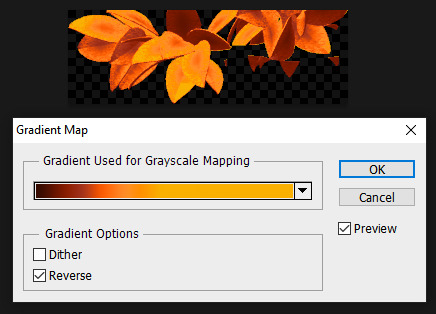
Gradient mapping is a powerful tool for recoloring almost anything. It can give way better results than methods such as hue/saturation, replace color, etc. And thanks to photoshop actions, applying this recolor to all the animation frames took just a couple of minutes.
Unfortunately, the fall leaves look "bright" in the nighttime version of the playscene. There does not seem to be a way to implement a darker version of these leaves for the nighttime playscene. If you look at the sprites in Tinker, you'll see that there are two sets of animations for Leaves A, B, and C and they're labeled "PropsAd" and "PropsAn", which would lead you to think that the developers originally intended for there to be a set of leaves for the day time, and a darker set for the night time. I guess the developers scrapped this idea because this does not work in the actual gameplay. When I experimented with this, the game appears to randomly display the nighttime sprite even during the day time, effectively ruining the intended affect. I'm not sure why the developers scrapped this. Either they had issues coding this properly or were just didn't want to put in the effort to make two sets of leaves.
WINTER
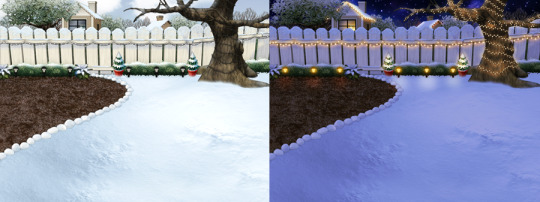
Instead of doing recolored leaves for this scene, I made all the leaves transparent and added holiday lighting to the tree. I know the lights aren't perfect - it was kind of hard to make out which direction a branch was going, so it has hard to maintain 'perfect' perspective.
CRYSTAL YARD

This is a bonus playscene that I made because I got a little side-tracked as I was working on the 4 seasons back yards. This is inspired by the Suramar zone from World of Warcraft, so it has a bit of that fantasy, night-elf feel and color scheme. It's been years since I've played WoW but I still appreciate the enchanting aesthetic of the elven zones.
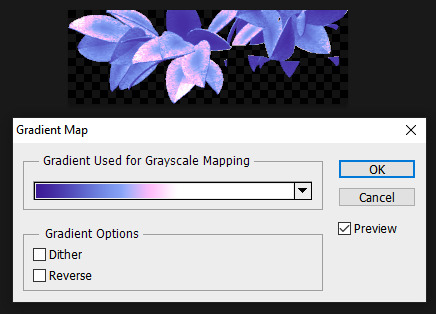
I used gradient mapping again to recolor the leaves to give it this lavender, shimmery, iridescent look. I did a little bit of gaussian blurring and layer effects to make them look a little more "glowy" than the originals.
As before, Tinker won't let me edit the blinds, so it limited what edits I could do to the houses. I would love it if I could have done curtains instead or something. I did my best to make these houses look a little less suburban and more elven. It's not perfect but it was rough working with what I had.
KNOWN ISSUES / THINGS I COULDN'T EDIT
As far as I'm aware, there is no way to turn off the snow effect for seasons like summer where it wouldn't make sense. This probably involves some code-editing that is beyond my technical skillset.
The winter playscene still has the green grass footprint when your petz walk. The sprites for these are not housed within the .env itself but in the Petz 5 Rez.dll file. It would probably involve a bit of tweaking in the code to switch the sprites to something else.
The fall leaves are "bright" in the night time version because there is no way to implement a second, darker set of leaves.
I cannot edit the blinds animation. Tinker gives you an error when you try to edit this sprite. This unfortunately limits what edits I can make to the house and the fence because of where the sprite is positioned.
If anyone does know of solutions to these, do let me know as I'd love to enhance these scenes further!
ICONS
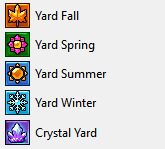
Making the icons for these was also a fun little project. For some odd reason though, the game puts a stray pixel over them when I import them through LnzPro. I did my best to disguise them but there does not seem to be a way to fix that.
BEFORE / AFTER
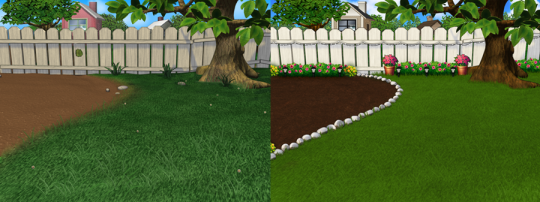
With all that rambling out of the way, visit my main page over at Magnolia Road > Resources > Playscenes to download the goodies!
37 notes
·
View notes
Text
Hey Neighbor PT 10
WC:1.3k~
Previous
AO3 page
Toji
“So what exactly are you wanting me to do, sir?” the lanky male asks Toji. The computer opened and reflected in his oversized glasses.
“I am curious myself,” Shiu sits with his ankle over his knee, staring at Toji from across the kitchen table. “Your text from last night was quite unexpected”
Toji is seated with his forearms braced on the table, a slight frown on his face and a tiredness in his eyes. Which was to be expected since he hadn’t slept a wink the previous night. His mind spun from thoughts of you and this mysterious guy that had interrupted his owning up everything to you. He battled back and forth with his mind–should he really try to find out who this was or should he allow you to live your life and make your own choices? As the sun peaked over the horizon, he came to the middle ground, sorta. He’d find out who this guy was, but that was it! No background checks, no sending out people to his house, and definitely not wiping him off the planet and out of your life. Just a normal hacking of a phone.
“I need to see messages on y/n phone.” Toji answers.
Shiu’s eyes widen, taken back for a moment. Then, his face turns to one of joy. “Ah, already? The agreement must’ve been–”
“This isn’t about the agreement,” Toji interrupts, brusquely. He turns towards the hacker. “Just tell me you can do it.”
The hacker wrings his hands over his keyboard, clearly nervous in the presence of the infamous Toji Fushiguro. “Uhm, I can put spyware on it? Do you have the phone?”
“No, do it remotely. She uses an Apple phone and computer. I’m sure she has messages coming through her computer on the messaging app.” He demands.
“If we are in the range of her wifi, I can crack through her password, and then the software can gather all her credentials–logins and passwords. Then, we just enter those into the messaging app.” The hacker spoke quickly, clearly excited to show off his abilities.
“Do it,” he orders.
~
A day off work was never really a day off. Being so busy with work and honestly being lazy, the house chores had fallen behind. Though you have been living here for a few months now, the house still screams “Grandmother’s house.” You just hadn’t had the heart or the mental strength to get rid of things. Grief made you hang on to it as much as possible Until the smell of her house was replaced with your soft vanilla and lavender smell. You started in the bedroom, packing away old clothes to take to donation centers and replacing the bed sheets with ones that were more you—A soft purple comforter and an overabundance of pillows.
After folding the new bath towels and placing them in the upstairs hallway closet, you look up at the ceiling and the hatch to the attic ladder. You had been dreading going up there for a few reasons. Spiders, dust, dirt, mold, and the wild idea that someone might be up there living for all you knew. Another reason was what you DID know was up there. Pictures, memories of people you would never see again, and memories of moments you’ll never experience. But, today was the day. It had to be done.
Straightening your shoulder, you pull the string and allow the ladder to unfold to the floor. Surprisingly, no dead bodies tumbled down and no clouds of dust poured. You climbed the stairs, holding your phone as a flashlight. Once at the top, you notice it’s not the crypt you expected. It could be a spare room, the floors barely showed signs of neglect, neat stacks of books in the corner, and enough room to stand. Another string hung from the rafters to a light that still worked.
Getting to work, you pull dusty boxes from the corners, carry them to the floor below, gather the books to sort through and sweep the floor. Once satisfied with your cleaning, you gather your supplies and turn off the light. You switch all the supplies to one hand as you shuffle to the ladder.
The canister of furniture polish slips from your arm and rolls to the side of the attic. You chase after it, using your phone light again in the dark. The light bounced off the can and another glint of metal on the wall you hadn’t noticed.
Upon further inspection, you see a small gap in the wall, metal peaking out behind it. Using your phone light, a two-foot by two-foot section of the wall seems to be cut into the wall. YOu dig your finger into the exposed groove and gift it a sideways push. After getting stuck a few times, the panel recedes into the wall at the right, and the content behind it is revealed.
A silver safe about the size of a mini fridge sits behind the wall, a thin layer of dust coating it. A keypad blinks in the upper corner. You take a chance and attempt to pull the handle, hoping it would open—another part of you hoped it wouldn’t. Scared to see what was in it.
After 3 more tugs of the handle, you give up. It clearly needs a passcode. You try a few—1234, 11111, 2222 —-- before again giving up in case it had a system that locked it completely for an undetermined amount of time.
Finally, you climb back down the ladder, Confused, which seems to be your everyday emotion these days. You might as well have a giant question mark above your head
What the fuck is going on?
Toji
“I was able to hack into her cloud and find her contacts. I reverse-searched the number of the last message she received. It comes back to a Connor J. Falco but it appears he’s gone by a multitude of aliases. Here are some of the text messages I was able to—”
“I’m not going to read her messages, just give me what info you have on the guy,” Toji interrupts, slightly closing the laptop that the hacker had rotated around for him to see.
“Isn’t your concern that she is…involved with this man? Romantically?” Shiu chimes in from the living room where he is sitting on the floor with Megumi, playing with action figures. “ I believe I’d want to know what they were discussing, hmmm?”
“That’s—her business,” Toji replies, knowing how ridiculous it sounds.
“Doesn’t hacking into her phone inadvertently—”
“Just give me info on the guy,” Toji says to the hacker. He knows it doesn’t make sense. He tries to ease the guilt of spying by telling himself it’s only half spying. And it’s not spying on you, you were just the obstacle to get to the real prey. He wouldn’t read any of your messages or look through your photos and social media. That’s where he drew the line—the very thin one.
“Connor J Falco is an independent contractor, though I can’t find anything about what exactly he is contracted to do. Small online presence, just moved to town from overseas. No criminal records, no past traffic infractions.”
“See? An upstanding citizen.” Shiu laughs. “Completely harmless.”
“However,” the hacker clears his throat. “That’s just for Connor.”
“What do you mean?” Shiu stands behind the laptop.
“His other alias,” Toji answers. He knew this was what would happen. Whatever persona this guy was showing y/n was no doubt clean. It was his other personas that worried him.
“Correct. And Dmitri Sokolov?” The hacker nods and turns the laptop around for Toji to see. “He has quite a disturbing criminal history.”
Toji slides the laptop closer, clicking through the pages of court records and mugshots both international and domestic. From white-collar to violent crimes. His heart hammers in his chest. These weren’t petty crimes, this guy has experience.
“Shit.”
#Hey neighbor#toji fushiguro#Toji fushiguro reader#jjk#jujutsu kaisen#jjk x reader#jjk x you#jjk reader#jujutsu kaisen x reader#jujutsu kaisen x you#jujutsu kaisen smut#jujutsu kaisen angst#Toji fushiguro jjk#Toji fushiguro x reader#Toji fushiguro x you#Toji fushiguro headcanon#Toji fushiguro smut#Toji fushiguro fluff#dilf toji#dad toji#protective toji#Toji fushiguro you#Toji fushiguro angst#Toji fushiguro fic#megumi fushiguro#jjk toji smut#jjk toji fushiguro#toji zenin#toji zenin reader
33 notes
·
View notes
Text
This is a Grift and You Shouldn't Fall for It
I want to talk about an article I saw from thebookseller.com that came out Monday which talks about a new AI-powered publishing platform called Spines which wants to disrupt the publishing industry by providing a new platform. I encourage you to read the actual article here, but I want to address how they are, based on my own observation as an independent author, a grift and why you shouldn’t fall for it.
Let’s address the first concern which I and probably a few other people have when presented with Spines’s goal of publishing 8,000 books in 2025 alone. Doing a very quick, unscientific google search, we can find that of the biggest traditional publishers in the United States, only Penguin Random House and Harper Collins publish more than 8,000 books a year, and these are massive global corporations. The next two largest, Hachette Book Group and Simon & Schuster, publish only roughly 2,000 books a year and these are still some of the big boys on the block. So the goal of publishing 8,000 books a year is certainly ambitious for Spines. How is this going to be done?
There are two possibilities and one is that a lot of this is going to be books produced in part or entirely by plagiarism software (“AI”). I want to acknowledge that as a real possibility, but I want to go forward with the good-faith assumption that there will be a significant number of passionate people who have poured their heart and soul into writing a book and are going to be taken advantage of by these techbros. Even before plagiarism software became widely available, self-publishing on Amazon had exploded and we saw millions of books self-published in just an ebook form every year. So I imagine that these people, who are self-publishing on Amazon and other places, are probably the market for Spines.
Now how do I know this is a scam? I do not have a ton of experience is self-publishing because I’ve only published two books at time of writing, but I do have recent hands-on experience which makes me qualified. There isn’t a lot of info in the article on what services Spines is offering but we get an exact number on cost as well as types of services in the article. “Spines costs $1,200 to $5,000 to automate proofreading, cover design, metadata optimisation and limited translation services, starting with Spanish.” Now, this may, on the low end, be cheaper than hiring professionals to do this kind of work, but it’s still going to be a scam because you’re going to get a shoddy product.
Let’s start with proofreading, which is under the umbrella of editing but is one of several types of editing. As Reedsy explains, there are four distinct types of editing, all of which come with specific costs. First there is editorial assessment, which is when you have a very, very rough draft and need some direction on writing it. (I have not yet done editorial assessment because I have been fortunate enough to be plagued with the knowledge of what I’m writing.) This is very broad advice which an AI cannot provide but a human can. Second is developmental editing for a finished manuscript, which is where you have an editor go through, provide specific feedback on areas for improvement and suggestions, and point out any major issues. This is where you get into rewrites and polishing a manuscript to a finished product. Again, and AI cannot do this.
So we finally come to copy editing and proofreading. Now, I’m going to fold them together although they are technically distinct because copy editing includes proofreading as well as making sure capitalization is consistent, tenses remain consistent, you don’t repeat yourself too much, all the little things which help polish the rough edges off of your manuscript. Proofreading is checking for spelling and typos, as well as grammar issues and any formatting issues. AI can do this, as tools like Grammarly exist for this sort of thing for a couple years now. (I wouldn’t recommend using Grammarly, but that’s a separate rant for a separate day.) Plus, you know, spellcheck which has been around since the 1990s. Technically this is a task which AI can do, but it can still make mistakes such as with homophones (the train went threw the tunnel). And with so many free tools available if you’re going to have AI do this task, why pay someone else to do it? AI is not going to give you insightful, meaningful feedback on your manuscript, but it will do spellcheck for you and LibreOffice does that for free anyway. So paying to have AI proofread your manuscripts doesn’t make any financial sense.
Let’s move on to the next area they want to automate, cover design. Again, I have limited experience and I can say very definitively that you can get a good cover for about $750 USD from a professional artist who will produce what you want and will be able to keep things you like but change things you don’t with an incomplete project. Plagiarism software that creates images cannot do that. Unless they’re hiring artists to touch up and improve generated images (which I doubt), all Spines is offering is another service you can get for free or cheaper elsewhere online. I highly advise against generating your cover images, if only for the fact the computer cannot give you exactly what you want. You can feed prompts into it and maybe get something close enough, but if you have a specific image of what you want for your book cover you cannot get that from AI. There are a lot of ethical arguments against plagiarism software as well, but I won’t repeat those here just for brevity’s sake. Again, if you’re willing to use plagiarism software to make your book cover, which is what the guys at Spines are offering, then you can do that cheaper elsewhere.
The final one which I can speak with any authority on is metadata, which I’ve had to enter for my own books before and you can too. For those who don’t know, metadata is information attached to the book’s ISBN and publication info that provides info about the book. This can be basic info such as the intended audience, the genre, and the subject matter, but it can also be more granular like what type of fantasy novel you have (romantasy vs cozy). While it can be an annoying or frustrating task, such as when every word to describe my book flies out of my head when I have to actually describe it, it’s also fairly simple. And I’m going to be honest, I don’t expect the AI to do much more beyond algorithm scraping and suggesting metadata like “for you” and “trending”. (Sort of like those videos that spam every popular tag in the hope of getting traction.) So I seriously doubt that this will be a service worth any sum of money.
Finally I’m going to touch briefly on translation because I haven’t translated a book and I don’t know what goes into translating one either but I can make an educated guess that it’s going to be the equivalent of pasting your manuscript into Google Translate. If you’re willing to accept that level of quality, you can get it for free. If you want a good translation you’re going to have to shell out far more money to get an actual person to do it.
And all of this doesn’t even get to a very important part of publishing, ISBNs. If you’re self-publishing you absolutely want to buy your own ISBNs, and buy multiple because they cost less if you buy them in bulk and you will need separate ISBNs for both the print and digital editions of your books. I don’t know if Spines is offering ISBNs as part of their package, they certainly could, but for independent authors it’s best practice to use your own ISBNs because you can control those opposed to whatever platform you publish on.
So are the AI-powered services that Spines is going to provide be worth it? I highly doubt it. For the amount of money you’ll end up spending you’d be better off actually hiring humans to help you with your book and get it to a finished, polished state. I can’t see this company offering you anything that isn’t already available for free or nearly free elsewhere with the same lackluster quality. If you have something you’re writing, you’re passionate about it, and you want to publish it, I highly encourage you to get real human beings to help you improve it. Reedsy (which this is not an ad for) is the platform I have used to get in contact with editors and artists to help get my books out into the world. But I’m sure plenty of other independent authors can help you find all sorts of other people able and willing to help. Spines is merely charging you for the privilege of receiving substandard work spat out by a computer.
#indie author#self publishing#publishing#writing#writerblr#writeblr#writers on tumblr#ai#plagiarism software#spines#books#rants#opinion#grifts#kalpar
4 notes
·
View notes
Text
Getting to know mutuals game! I was tagged by @just-an-elf-with-the-socks and @fandom-chameleon23 to do this. @flippyspoon @damnyoubishop @saubrimbor @queenmeriadoc @celebrimborsapron @myloveistoblame @rooksacrifice @elisa74 some random tags if people want to do this.
What’s the origin of your blog’s URL?
mai is a childhood nickname. komagata is from yumi komagata from Rurouni Kenshin (yeah i know, but i made this username 20+ years ago, it might as well be my name online now).
Favorite Fandoms?
Star trek (all of it), Tolkien, Dungeon Meshi, Legend of Zelda, Interview with the Vampire, Dragonball
Favorite Color?
In general i say purple, but there is one particular shade of red i love #ff0a47 is pretty close.
Favorite Game?
Super Mario RPG or Link's Awakening
Song stuck in your head?
Not Like us by Kendrick Lamar or The Distance by Cake. I listen to neither of these artists, i blame the world.
Weirdest Habit?
i don't mind my drinks lukewarm.
Hobbies?
hiking, writing, video games, traveling, home improvement, cosplay, nail art
If you work what’s your profession?
Im a software engineer
If you could have any job in the world what would it be?
Probably still software engineering, but working in accessibility or some other non-profit. But really if i could get paid to travel that is what i would do. (although these days i dream of just writing erotica professionally... but i'd probably hate actually writing on a schedule).
Something you’re good at?
I'm a pretty good at hand sewing and making clothing designs from things i see on screen. I'm not a pro but I'm good for an amateur.
Something you’re bad at?
cleaning my closet. motivating myself to clean in general.
Something you excel at?
I'm good at my job, i think. I'm really good at planning travel for people, actually. Booking flights/hotels/restaurants, optimizing what to do. I think I'm pretty good at most logistical tasks provided I am doing them for other people.
Something you love?
my cats. my house. my friends.
Something you could talk about for hours off the cuff?
any of my fandoms, theology/philosophy, workers rights/civil rights, politics.
Something you hate?
People with no loyalty, crowded environments.
Something you collect?
stuffed animals, nail polish.
Something you forget?
where i put my keys and transit pass
What’s your love language?
uhh.... Acts of Service?
Favorite movie or show?
The Grand Budapest Hotel
Favorite food?
Corn. I can eat infinite corn.
Favorite animal?
i love all animals, but cats are easiest -- but i really want to meet a platypus. I also love peacocks but i know it would not work in a city.
Are you musical?
Not at all.
What were you like as a child?
introverted and stubborn
Favorite subject in school?
Math
Least favorite subject in school?
Chemistry
What’s your best character trait?
I won't bullshit you.
What’s your worst character trait?
I'm very stubborn.
If you could change any detail of your day right now what would that detail be?
I would cook more often.
If you could travel back in time who would you meet?
My grandfather who died before I was born.
Recommend one of your favorite fics?
ONE?? Ok gonna pick one at random but Feelings are boring by Lazulisong https://archiveofourown.org/works/276111
Favorite fanart?
Again, one?? I'm digging everything by Saubrimbor at the moment, however.
5 notes
·
View notes
Text
Content Creation #2: Free Asset Libraries
When you're working on a build, sometimes you might find some weirdness. Carpet where tile should be, or wood that's a little too orange. Or maybe you're trying to build something out of prims or mesh kits, and don't quite have the skills to make your own textures yet.
Free PBR libraries online are your new best friend! My favorite is ambientCG. Check out this cool tile I just picked up for my bathroom there!


This tile only cost me L$30 in upload fees, and looks professionally done. You can grab it for yourself here.
I've also downloaded nice looking hardwood floors, mossy concrete, and some lovely polished marble. The one I get the most use out of is probably this simple rough wood texture.
When you download textures from this website for use within SL, make sure you get the "1k" zip files so you can upload them without needing to resize them.
You don't need to upload everything in the folder. At present, SL only supports a diffuse, normal, and specular layer. AmbientCG assets often come with color, normal, roughness, and displacement layers. Experiment with what looks best for your build. Typically, I use the color layer as my diffuse texture, the normal for the...well, normal layer, and then either the color or displacement layer for the specular. I like to upload everything as a temp upload and just fiddle until I like the way it looks before fully uploading anything.
For me, the best part of getting textures this way is all the options it opens up! I can completely modify these textures using an image editing program however I like before uploading them. So if say, I wanted to color every other tile a specific shade of blue, I could! Or if I wanted to change the tone and saturation level of those hardwood floors, that's an option too (so long as I know how to actually do that using the software I have).
You also have the added benefit of being able to demo the textures before you pay for them. Try them out in your actual build, swap-em out, change the colors and see the updates live inworld. Toss down a flat plane on your house's floor and, without messing up your house's textures, test and see if carpet would look good in there, or play around with new a brick accent wall! Add materials to an old side-table to bring it to the modern era! You'd be surprised how much heavy lifting a wood-textured normal map can do when combined with older textures. The possibilities are truly endless.
AmbientCG also has some files that are formatted specifically for use in substance painter too, for those of you making content that way!
7 notes
·
View notes
Text
Meduza's The Beet: Heels for freedom
Hello, and welcome back to The Beet!
Eilish Hart here, the editor of this weekly dispatch from Meduza that brings you original reporting from across Central and Eastern Europe, the Caucasus, and Central Asia. If someone forwarded you this email, sign up here to receive future issues of The Beet. Want to sample some more of our work first? Check out last week’s story about how independent journalism persists in Turkmenistan. And don’t miss my full interview with Access Now tech-legal counsel Natalia Krapiva, who kindly joined Meduza’s The Naked Pravda podcast to discuss recent revelations about the use of Pegasus spyware in Armenia during the 2020 Nagorno-Karabakh war and its aftermath.
Hundreds of thousands of protesters gathered in Warsaw last Sunday for an anti-government march timed to coincide with the 34th anniversary of the partially-free elections that ushered in the fall of Poland’s Communist regime. With a parliamentary vote coming up in Poland later this year, and President Andrzej Duda now moving to water down a controversial piece of legislation that critics fear will be used to target the opposition, this is something to keep an eye on. But it’s not the topic of this week’s feature. Instead, we’re turning to Warsaw to celebrate the start of Pride Month with a story that takes us inside the Polish capital’s drag scene and introduces us to its late queen, Kim Lee. Journalist Joanna Kozlowska reports for The Beet.
Heels for freedom: Kim Lee and the history of Polish drag
By Joanna Kozlowska

Kim Lee in her Warsaw studio before a performance. 2019.
ZULA RABIKOWSKA
Just over a century ago, looking into the future after emerging from a world war and 120 years of foreign occupation, Poland abolished all aristocratic titles. Later, decades of Communism rendered all thoughts of royalty remote. Yet this year, the Polish capital has crowned a queen, and the choice may surprise some.
A short walk west from Warsaw’s main train station, stepping into the whitewashed mansion that houses a branch of the municipal museum, visitors are greeted by a riot of pastel colors. A black-haired figure in a sumptuous golden dress smiles from a poster near the entrance that reads, Kim Lee. The Queen of Warsaw. The museum’s latest blockbuster offering, the temporary exhibition celebrates an artist lovingly dubbed “Poland’s best and only Vietnamese drag queen,” whose life story is as stunning as the costumes assembled inside.
“Kim Lee had to be real, because nobody could have made her up,” a column in Poland’s largest left-wing daily recently proclaimed. “If she were a character from a TV show, conservative reviewers would tear it apart. More progressive ones, too, might doubt the scriptwriters’ sanity.”

A display from the exhibition “Kim Lee. The Queen of Warsaw.” 2023.
TOMASZ KACZOR / MUZEUM WARSZAWY
Of the half dozen people The Beet’s correspondent interviewed who knew Kim Lee’s creator Andy Nguyen before COVID-19 cut his life short in 2020, all would agree. Nguyen’s story is indeed almost too unusual to be true.
A star student in his native Vietnam, Nguyen came to Poland on a scholarship just as Communism was being dismantled. He got a research job at one of the country’s top physics institutes, only to see his pay fall to a pittance during the economic turmoil of the 1990s. He then worked odd jobs to support himself and his young family. For a time, the former scientist ran a market stall selling East Asian goods that a close friend compared to those at Warsaw’s now-demolished 10th-Anniversary Stadium. (Once the site of Communist Party galas, the stadium was later reduced to a sprawling outdoor bazaar where vendors from all over the former Eastern Bloc hawked pirated software, flouncy underwear, and dubious health remedies).
Nguyen’s drag persona, Kim Lee, was born at the turn of the millennium and soon shot to stardom beyond the wildest dreams of anyone in Poland’s fledgling drag scene. “She whizzed into the mainstream like a meteor,” says Teo Łagowska, a performer with Warsaw’s Drag King Szarm Trio collective.
Nguyen’s long-time partner, Remigiusz Szeląg, concurs. “Kim performed everywhere,” he recalls. “Non-stop, all over Poland, he was a fixture at ‘straight’ parties and club nights, at burlesque shows. He appeared on TV, on discussion panels. He twice gave lectures at the University of Warsaw — needless to say, in full drag.”

Andy Nguyen (Kim Lee) getting ready for a performance in his studio. Warsaw, 2019.
ZULA RABIKOWSKA
Pleasant surprises
Magdalena Staroszczyk, who curated the exhibition in Warsaw, has no doubt that it belongs in a public museum. She is visibly proud of bringing the project to fruition, not least given the Polish government’s enduring anti-LGBTQ stance. “Queer history should be just as present in various institutions as any other [history],” she underscores.
For almost a decade, Poland has made headlines for its ruling party’s dogged defense of “traditional values” that critics say amounts to little more than anti-LGBTQ policies. Successive electoral campaigns have seen the Law and Justice Party intimidate voters with the “rainbow menace,” while top officials — including Poland’s current president and education minister — have suggested that LGBTQ people don’t deserve equal rights. By October 2019, more than 60 local and regional councils had adopted anti-LGBTQ declarations, with right-leaning councilors decrying the spread of an “LGBT ideology” they claim threatens families. Local authorities and Polish courts have since scrapped some of these resolutions (in many cases for fear of losing E.U. funding), but a sense of deep unease remains.
Both Szeląg and Krzysztof Tomasik, Nguyen’s friend of many years and the author of multiple books on Polish LGBTQ history, describe the Warsaw exhibition as a turning point for queer visibility. The show, Tomasik stresses, is housed in a state institution — a clear victory for those calling for greater inclusion, even if the museum’s financing comes from Warsaw’s relatively liberal city hall, rather than Poland’s Culture Ministry.
Staroszczyk, the curator, sees Nguyen’s’s life and work as an integral part of Warsaw’s history. She also notes the artist’s close links to the city’s Wola district in particular, where the museum is located. Nguyen, a long-time resident of the neighborhood, kept more than 1,000 hand-sewn costumes in a space in Wola that became known as “Kim Lee’s Dressing Room.” He also performed in many local clubs, some of which popped up in the district’s shuttered factories.

Nguyen choosing an outfit for a performance. 2019.
ZULA RABIKOWSKA
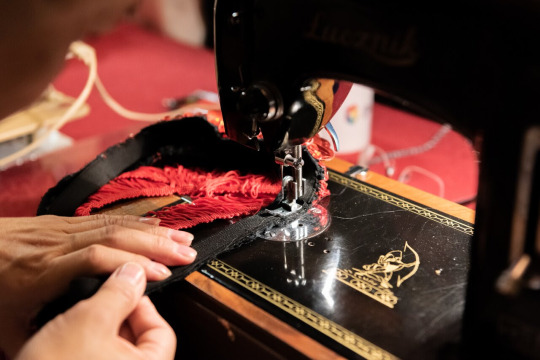
Nguyen sewing a costume in his studio. 2019.
ZULA RABIKOWSKA
Today, Wola retains a post-industrial feel, with the high-rises that used to house its workers towering over the museum’s Neoclassical pile. Staroszczyk says that neighbors have been venturing in to get what for many is their first taste of drag.
“We have one neighbor in particular, an older lady who I’m told has seen the show several times already. She’s been delighted and has been bringing friends along. That was one of the pleasant surprises,” the curator says.
Groups of retirees — most but not all of them women — regularly book guided tours of the exhibition, Staroszczyk adds.
Local councilors from the Law and Justice Party, meanwhile, questioned the rationale behind the exhibition, while some right-wing and Catholic publications accused the museum of promoting a “deviant lifestyle.” However, as of early June, there has been no sustained political or media campaign against the show, nor protests trying to disrupt it.
On an overcast Saturday in May, the exhibition was well-attended. Groups of visitors admired Kim Lee’s hand-crafted creations — from silk kimonos to voluminous gowns that wouldn’t look out of place in Bourbon-era Versailles — and attempted their own drag transformations, trying on frilly boas and curly blond wigs. Two middle-aged women giggled with delight as they posed before a mirror garlanded with flowers. One 19-year-old visitor named Maciek admitted he’d been surprised to discover that Kim Lee had sold out clubs years before RuPaul’s Drag Race — the U.S. reality competition series that brought drag to a wide audience — premiered on Polish Netflix in the early 2010s.
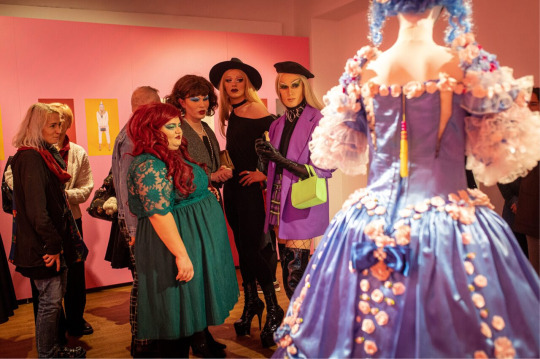
The opening of the exhibition “Kim Lee. The Queen of Warsaw.” 2023.
TOMASZ KACZOR / MUZEUM WARSZAWY
Polish divas and a whiff of the West
Researcher Jakub Wojtaszczyk, whose book of interviews with Polish drag performers was published last June, says that self-described drag queens began appearing in the early to mid-1990s, not long after Communism’s collapse. Their acts often harked back to Polish “divas” from Communist times: cabaret star Violetta Villas with her layered, feathered gowns, 1960s sex symbol Kalina Jędrusik, who scandalized crowds with her backless outfits, and patrician mezzo-soprano Irena Santor were all clear favorites.
One of the drag scene’s stalwarts, Lady Brigitte, recalls impersonating both Villas and Santor during her performances in the 1990s. She says that many queer men at the time embraced Villas as an icon. “She was a colorful flower, a bright light that seemed to have arrived [in Communist Poland] from America, she was bold and courageous, and above all, different,” the drag queen says.
“Of course, we’d also tackle foreign figures like Cher and Tina Turner — you wanted to have that whiff of the West. But most of each show would revolve around Polish artists,” she explains.
According to Ludmiła Janion, a cultural studies scholar at the University of Warsaw, the history of Polish “queer icons” goes much deeper. As she speaks, Janion pulls out photos of cross-dressing Polish actors from the 1910s, 1920s, and 1930s, one of them the spitting image of U.S. dance pioneer Isadora Duncan. One of the extraordinary performances of that time, she says, comes from the 1937 comedy Neighbors (Piętro wyżej, in Polish). A glittering romp about a feud between two music-loving residents of a Warsaw townhouse, it shows cabaret heartthrob Eugeniusz Bodo wow an audience with his impersonation of the American actress Mae West. “Sex appeal is our womanly weapon,” Bodo sings as he whirls around the stage in a blond wig and a sparkling black dress.
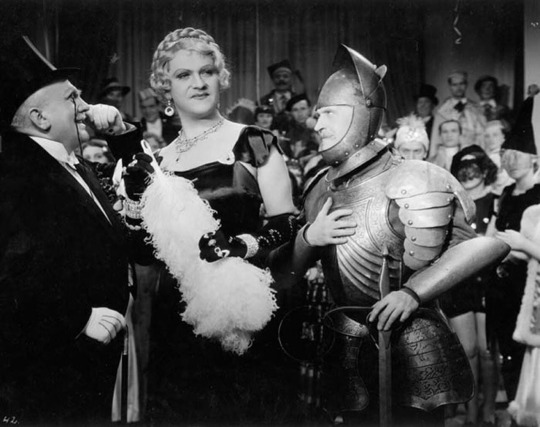
Eugeniusz Bodo (center) impersonating Mae West in the 1937 film “Neighbors”
WIKIMEDIA COMMONS
Some Polish film critics view the scene as a nod to LGBTQ audiences, pointing to the blossoming of queer culture in interwar Warsaw. “Bodo never got married. He wasn’t the type to chase after women,” Janion explains. “Of course, we can’t be sure that he was gay, but he was an ambiguous figure,” she adds, noting the actor’s string of cross-dressing characters during the brief but intense flourishing of Warsaw’s cabaret scene in the early 20th century.
With the advent of Communism, this artistic freedom came to an end. Cross-dressing performances did not disappear, Janion says, but like much else, they retreated to the private sphere; to the semi-safety of high-rise apartments and tipsy evenings with friends. As a result, records of these “clothes-flipping parties” are sparse and hard to find.
The parties themselves might have slipped into obscurity if Kim Lee hadn’t stopped to chat with an older gentleman who’d come to see her show one day in 2008. She soon found out that Andrzej Szwan, 69 at the time, had decades of “clothes-flipping” performances under his belt, even if his ornate costumes had scarcely left his building. With Nguyen’s help, Szwan transformed into one of Poland’s most eye-catching drag queens: Lulla la Polaca. Now 84, Szwan is still performing and much-loved by the media, including Vogue’s Polish edition and the country’s most august opinion magazines.
However, researchers Janion and Wojtaszczyk disagree about whether the “clothes-flipping parties” of Communist times and earlier film and cabaret performances can be classed as drag. Wojtaszczyk would rather reserve the term for modern-day performers who choose to use it themselves, while Janion is happy to speak about “a continuum of drag performances” that involve cross-dressing, an audience, and a note of homoerotic tension.

Andrzej Szwan (Lulla la Polaca) in the 2022 documentary film “Boylesque”
HBO
‘Sister, you’re the activist type’
Lulla la Polaca, for one, was quick to call herself a drag queen once she started performing publicly. She also proudly describes herself as an LGBTQ activist. Most people I speak to agree that the term could also apply to Kim Lee, though not all Polish drag performers embrace it.
“I’d always say to her: sister, you’re the activist type,” recalls Polish drag queen Lady Brigitte, referencing a double act she and Kim put on in the 2000s. Lady Brigitte herself has a more ambivalent attitude towards activism (“I performed at fund-raisers, but they were mostly for homeless animals”), though she expresses admiration for Nguyen’s engagement with Polish LGBTQ groups at the time.
“There must have been more than twenty,” Szeląg replies when asked how many queer rights organizations Nguyen was involved in during his lifetime. He adds that Nguyen was also active in Poland’s Vietnamese community — “although he liked to keep that part of his life separate,” initially for fear of negative reactions to his same-sex relationship and stage persona.
These concerns ultimately proved unfounded, Szeląg maintains. “Poland’s Vietnamese community has undergone a great transformation,” he explains, describing various relatives and friends of Nguyen’s he’s met over the years. “A while ago, a journalist from London came to interview its members for a story. Asked about famous Polish-Vietnamese people, every single one mentioned Kim Lee.”
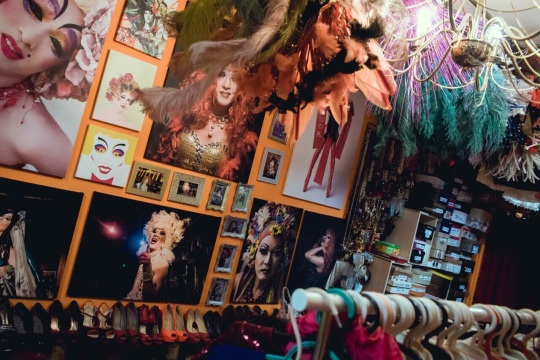
In Kim Lee’s Dressing Room
PAT MIC / MUZEUM WARSZAWY
Szeląg and Tomasik say that Nguyen didn’t like to dwell on the racist taunts he sometimes faced. Be that as it may, he publicly weighed in on what Polishness could and should mean by starring in a music video that parodied Poland’s infamous 2014 Eurovision entry. “We are Slavic” by Polish singer Cleo and record producer Donatan, with its busty, butter-churning milkmaids and appeals for foreigners to “try Polish women,” prompted a collective groan from the country’s feminists and liberals. Donatan’s comments denigrating that year’s winner — Austrian drag queen Conchita Wurst — only added fuel to the fire.
Kim was not one to sling back insults. Instead, she twirled around a meadow in Polish folk dress, lip-syncing to lines about “hot Slavic blood” and Polish women “ruddy as fresh bread.”
Wojtaszczyk and the drag performers The Beet’s correspondent interviewed also recalled Kim’s role in integrating Poland’s drag scene and raising its profile, whether through hosting “Miss Drag” pageants or judging competitions. Teo Łagowska and Agnieszka Małgowska of the Drag King Szarm Trio — the aforementioned Warsaw collective of female and gender-queer performers who embody mostly masculine characters — stressed that Kim advocated inclusivity within a scene that they say still sidelines groups like theirs.
Nguyen’s untimely death from the coronavirus in 2020 was “a shock for Poland’s rainbow community,” Małgowska says. “We always thought that Kim would become a senior drag queen, like Lulla [la Polaca], that she would dance until the end of time,” she laments.

In Kim Lee’s Dressing Room
PAT MIC / MUZEUM WARSZAWY
Szeląg, Tomasik, and Staroszczyk all spoke of the Museum of Warsaw exhibition as a means of mourning the artist and honoring his memory. Tomasik, the author and Kim’s long-time friend, says that a “terrible sadness” remains, but he also notes his satisfaction that Polish drag is finally beginning to get official recognition. “It’s an art with a decades-long history and its own icons,” he says. “These are just the first attempts to commemorate, remember, and honor them.”
8 notes
·
View notes
Note
When did you start making games?
As a kid I really liked drawing maps and levels based on games I liked: yoshi, megaman, crash bandicoot, sonic, gex, and oddworld.
I really liked the world map in mario world and drawing a bunch of those, thinking about what stages would be in them. With Megaman, I remember nintendo power showed all the robot masters for each of the previous games which I hadn't played yet (I had an SNES so only knew about X and 7). I made a bunch of levels based on what I thought the robot master's levels would've been like. With crash, I remember making a whole notebook using colored markers of like 70 stages.
I started actually making games sometime at the beginning of high school when I went to Digipen's summer camps, a 2 week thing where we used their then in-house Game Development software, ProjectFUN. ProjectFUN was something I saw advertised in one issue of Nintendo Power, where they showed a screenshot of the UI and it was the first time for me seeing a software like that, and was what led me to asking about Digipen and going to the summer program.
They let us download ProjectFUN for home, but I couldn't really figure out how to use it, and went with something else called BlitzBASIC. The stuff I made was... basic, very small arcadey stuff with rough ms paint graphics. I think this would have been around 2006-2008.
I don't think ProjectFUN is utilized at Digipen anymore as when I went there for college (before dropping out) we ended up using Game Maker, which I ended up liking a lot more.Here's the first game I ever made in it, a 2D puzzle platformer where you mirror your position across the screen: https://www.mediafire.com/file/luy7wj5t8h55f25/SplitUp.zip/file
There were two other game maker games I made in that class but they were a lot less polished cause of the excessive workload Digipen gave us, which is part of why I dropped out. But I ended up sticking with Game Maker and developing a lot of smaller, incomplete stuff with it, and making more complete stuff into today.
2 notes
·
View notes
Text
get to know a simmer
I was tagged by @lilamausmaus - Thanks so much :)
show your wallpaper:
Phone > Desktop (Animated)
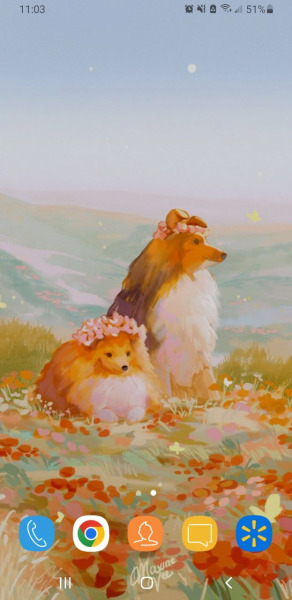
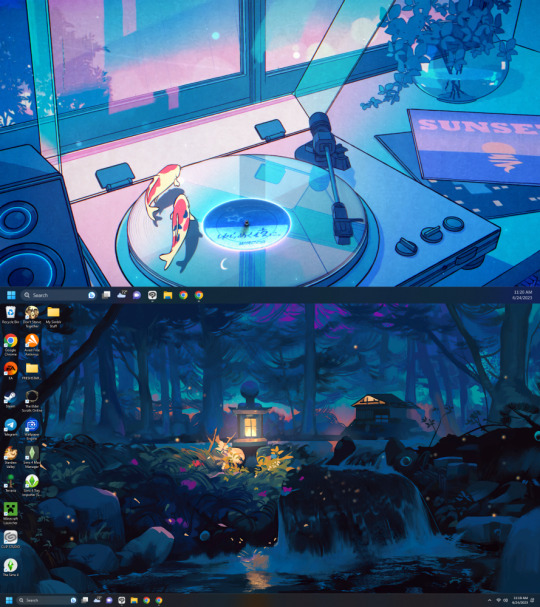
last song you listened to: Drum and Bass On The Roundabout
currently reading: Don't get sucked into too many books these days, most of my reading is through my job unless you count simblr stories lol
last movie: Ace Ventura Pet detective ... it's fucking lame how the plot of the movie is transphobia sponsored by the nfl
last show: I'm constantly stuck in a Dimension20 whole, the storytelling is so good and though I could never play ttrpg myself, it's cool to watch others be good at it :>
craving: nothing at the current moment other than long-term goals
what are you wearing right now: lol just changed from the leopard print sleep gown to more gremlin-casual Venom t-shirt and purple short shorts
how tall are you: 5'5-5'6 depending on the measure
piercings: old holes but I don't wear jewelry currently; I go in phases of either being covered in gold trinkets or bare
tattoos: 6 so far but want more, 2 on each forearm, 1 on my chest and 1 on my leg to match with my mom <3
glasses/contacts: used to but vision got better??
last thing you ate: breakfast! toast, eggs, sausage and nondairy cheese bc lactose intolerance
favourite colour: also phases. maroon/cranberry, gold, teal, deep ROYAL purple, cerulean, a verdant, void black, rich clover green and all the shades of browns/greys of the trees <3
current obsession: D20 honestly. Before that it was From Software Lore, collecting unique boots/shoes that I rarely wear and nail polish
any pets: one little purr machine named Kiki. Her other names are The Keek, Skreekus, The Scrunge, Scrungalista Evangalise, Skinny Raccoon, House Panther, Purrbaby, Kitten and other such variations
favourite fictional character: Kurt and Moon, my OC's which you all have seen Kurt simmed up before but I haven't done Moon. Maybe I should tho
last place you traveled: fuggin work. we dont go anywhere, we're poor af and my job is an hour commute so anytime at home is treasured lol
i'll tag @cantseemtohide @gingerbeardmansim @florwalsims
obviously no pressure yall but this was a fun to pick out what i was willing to share with the community and is a nice way to join in the buzz without the expectation. much love to all of those involved and have a great day :)
3 notes
·
View notes
Text
Crafting the Sound: Where Trap Beats Come to Life
In today’s music landscape, the demand for high-quality trap beats and a reliable recording studio has never been greater. Artists from all over the world are constantly on the lookout for the perfect place to capture their sound, polish their vocals, and bring their vision to life. The genre of trap, with its hard-hitting drums, rolling hi-hats, and deep basslines, continues to dominate playlists, making it essential for artists to have access to production environments that understand the culture and technicalities of the sound.
For any artist, a beat is more than just background noise—it’s the heartbeat of their song. Especially in trap music, where the beat sets the tone and mood, having access to a quality recording studio that specializes in trap beats can be a game-changer. These studios are often equipped with cutting-edge software and hardware designed specifically for crafting modern sounds. But even more importantly, they house producers and engineers who live and breathe the trap genre.
One of the key elements that sets successful artists apart is the environment they choose to create in. A professional studio allows artists to focus solely on their music while engineers handle the technical side—ensuring every 808 hits hard and every hi-hat rolls perfectly in the mix. From vocal recording to beat mixing and mastering, every detail is fine-tuned in a high-quality recording space.
But it’s not just about the gear or even the acoustics. It’s about the vibe. The right atmosphere can make or break a creative session. Walking into a studio and instantly feeling inspired is a powerful thing, and that’s where many serious musicians find their rhythm. Whether you’re laying down hooks or building a full EP, the studio becomes your creative sanctuary.
It’s also worth noting that trap music is evolving. New subgenres and sounds are emerging every year. Studios that stay ahead of the curve—constantly experimenting with textures, rhythms, and effects—are the ones attracting artists who want to stay relevant and original. Collaboration becomes easier in these spaces too, where producers, vocalists, and engineers can bounce ideas off each other in real time.
When searching for a recording space, artists should consider more than just location. Look for places that understand your sound, offer experienced professionals, and have a track record of delivering radio-ready results. Investing in the right environment can elevate an artist’s work from decent to unforgettable.
A standout example of this type of creative hub is found at thisisbiggz.com. Known for its commitment to quality and authenticity, the brand has become synonymous with modern sound development. With a deep understanding of what trap music demands and a studio space that caters specifically to its style, it's no wonder why artists gravitate toward this platform.
What makes a studio like this truly unique is the attention to both the technical and artistic side of music production. It’s not just about getting a clean vocal take—it’s about capturing emotion, energy, and originality in every track. Having a team that understands the delicate balance between digital precision and artistic expression is invaluable.
The journey from beat selection to final master can be a long one, but it’s a journey made easier—and more successful—when taken in the right environment. With every hi-hat pattern and every verse recorded, a story is being told. And for artists serious about their craft, that story deserves to be told with the highest quality sound and support.
0 notes
Text
Crafting Future Creatives: NIF Global Ludhiana’s Premier Fashion and Interior Design Education
Introduction
In the bustling heart of Punjab, where culture meets innovation, NIF Global Ludhiana stands as a beacon of creative excellence. As one of the most sought-after institutions for aspiring designers, our institute delivers unparalleled training in both fashion designing courses in Ludhiana and interior design courses in Ludhiana. With a mission to shape the next generation of design professionals, NIF Global Ludhiana offers students a perfect blend of theoretical knowledge and practical experience in an industry-focused environment.
From visionary fashion creators to cutting-edge interior design talents, NIF Global Ludhiana nurtures raw potential into polished expertise. Whether you're drawn to the ever-evolving world of style or dream of reshaping living spaces with aesthetic brilliance, our institute is the launchpad for your design journey.
The Rise of Fashion Design in Ludhiana
Ludhiana, long known for its textile heritage and vibrant fashion scene, is now becoming a hotspot for young designers looking to make their mark in the global style arena. At NIF Global Ludhiana, we’re not just keeping up with the trends—we’re setting them.
Our fashion designing course in Ludhiana is a comprehensive program that dives deep into core concepts like fabric technology, garment construction, fashion illustration, digital design tools, trend forecasting, and merchandising. We empower students to conceptualize, innovate, and develop signature collections that are both artistic and market-ready.
Whether you're a beginner with a passion for style or a professional aiming to upskill, our curriculum is tailored to meet the needs of learners at every level.
Why Choose NIF Global Ludhiana?
NIF Global Ludhiana is more than just an academic institution—it’s a creative powerhouse where design dreams come to life. Here’s why our institute stands out among the fashion designing institutes in Ludhiana and interior designing colleges in Ludhiana:
Industry-Driven Curriculum: We align our programs with industry requirements, ensuring that students graduate job-ready.
Experienced Faculty: Learn from designers, architects, and industry experts with real-world experience.
State-of-the-Art Infrastructure: Our campus features modern labs, design studios, and the latest software tools for hands-on training.
Global Exposure: With global affiliations and industry collaborations, students gain insight into international trends and standards.
Creative Workshops and Events: Participate in fashion shows, exhibitions, internships, and seminars that build your portfolio and confidence.
Fashion Designing Course in Ludhiana – A Closer Look
The fashion designing course in Ludhiana at NIF Global is crafted to provide students with a deep understanding of both the creative and commercial aspects of the fashion world.
Key Highlights:
Design Foundation: Learn the principles of fashion design, history, and clothing culture.
Pattern Making & Garment Construction: Get hands-on experience in crafting clothing from concept to creation.
Textile Science: Study fabrics, dyeing techniques, and textile behavior to innovate effectively.
Digital Fashion Tools: Master design software like Adobe Illustrator, Photoshop, CLO3D, and CorelDRAW.
Fashion Marketing: Understand branding, retail strategies, and how to launch your own label.
Runway Exposure: Create collections for fashion shows and industry showcases.
By the end of the program, students not only build a strong portfolio but also develop the confidence to work independently or with top fashion houses.
Interior Design Course in Ludhiana – Transforming Spaces
NIF Global Ludhiana is also celebrated for its acclaimed interior design course in Ludhiana, where art meets functionality. With increasing demand for aesthetic and purposeful spaces, skilled interior designers are more valuable than ever.
Our interior design program blends creativity with technical know-how. Students learn to balance form and function, with a strong emphasis on sustainable and innovative design practices.
Key Highlights:
Design Fundamentals: Learn space planning, design principles, and color theory.
Architectural Understanding: Study building materials, lighting design, and construction techniques.
CAD & 3D Modeling: Gain hands-on experience with AutoCAD, SketchUp, and other industry-standard software.
Client Management & Budgeting: Understand how to manage design projects, client expectations, and financial planning.
Residential & Commercial Design: Learn to design homes, offices, retail spaces, and hospitality environments.
As one of the most comprehensive interior design courses in Ludhiana, our program prepares students to become the best interior designers in Ludhiana, ready to bring any vision to life.
Career Opportunities After NIF Global Ludhiana
Graduating from NIF Global Ludhiana opens a world of career possibilities in both the fashion and interior design industries.
For Fashion Design Graduates:
Fashion Designer
Fashion Illustrator
Fashion Merchandiser
Textile Designer
Fashion Stylist
Costume Designer for Film & TV
Fashion Entrepreneur
For Interior Design Graduates:
Interior Designer
Space Planner
Visual Merchandiser
Furniture Designer
Exhibition & Event Designer
3D Visualizer
Project Consultant
With growing opportunities in e-commerce, sustainable design, and global collaborations, the scope for our graduates continues to expand every year.
NIF Global Ludhiana: Creating Design Leaders
Our commitment to excellence extends beyond education. At NIF Global Ludhiana, we’re invested in building future leaders who can shape industries and spark change.
We support students with:
One-on-One Mentorship
Career Counseling
Internships with Leading Brands
Placement Assistance
Entrepreneurship Training
This holistic support system ensures that students don’t just graduate with a certificate—they walk away with a vision, a portfolio, and a career path.
Connecting Culture with Creativity
Ludhiana's rich heritage plays a significant role in the design sensibilities of our students. NIF Global Ludhiana encourages learners to explore regional crafts, textile traditions, and cultural motifs to create work that is both globally appealing and locally rooted.
Through workshops with artisans, heritage tours, and cultural exhibitions, we bridge the gap between the past and the future—honoring tradition while innovating for tomorrow.
Alumni Success Stories
Though we’re not including testimonials, it’s worth noting that our alumni have gone on to work with renowned fashion labels, luxury interior studios, and even launched their own successful businesses. Many are now recognized as rising stars and trendsetters in the Indian design landscape.
Join the Creative Revolution
Design is not just about aesthetics—it’s about storytelling, problem-solving, and innovation. Whether you envision draping models on the runway or reshaping spaces that inspire, NIF Global Ludhiana is the institute where your creative journey begins.
Among the top fashion designing institutes in Ludhiana and the most reputed interior designing colleges in Ludhiana, we take pride in nurturing talent, ambition, and artistry.
#fashion designing course in ludhiana#fashion designing institutes in ludhiana#fashion designing colleges in ludhiana#interior design course in ludhiana
0 notes
Text
Premier Music Video Production in Delhi: High-Quality Services for Your Vision
When it comes to creating a standout music video, choosing the right production company is crucial. The quality of the visuals, the creativity, and the overall execution can make a significant difference in how your music is perceived. If you’re looking for a high-quality music video production company in Delhi, look no further than SpacePepper Studios—the premier music video production service in Delhi NCR.
Why Choose SpacePepper Studios?
SpacePepper Studios has earned a reputation as the best music video production company in Delhi due to its commitment to excellence, creativity, and cutting-edge technology. Whether you're a budding artist or an established name in the music industry, our team is dedicated to transforming your musical vision into an extraordinary visual experience.
A One-Stop Music Video Production House in Delhi NCR
At SpacePepper Studios, we offer comprehensive music video production services in Delhi NCR. From the initial concept to the final cut, our team handles every aspect of music video production, ensuring that your project is delivered on time and at the highest quality. Here’s what you can expect from us:
Creative Direction & Concept Development The first step in producing a successful music video is having a strong, clear concept. Our creative team collaborates closely with you to understand your vision, style, and message. Together, we craft a concept that aligns with your music while pushing creative boundaries.
Professional Cinematography & Filming As the best music video production company in Delhi, we use top-of-the-line equipment and professional cinematographers who understand how to capture every emotion and beat of your music in the most visually captivating way. From lighting to camera angles, every detail is meticulously planned.
Post-Production & Visual Effects After shooting, we bring your music video to life through expert post-production. Our skilled editors work with high-end software to ensure that the final cut is polished, with smooth transitions, stunning effects, and professional color grading. We also offer the addition of special effects, animations, and motion graphics to give your video that extra flair.
Sound Design & Music Sync At SpacePepper Studios, we not only focus on the visual aspect but also the sound. Our in-house sound engineers ensure perfect synchronization between the audio and visual elements, guaranteeing that your video feels as good as it looks.
Distribution & Promotion Our services extend beyond the studio. We understand the importance of marketing and distribution in today’s digital world. We can assist you in releasing your music video to various platforms, ensuring it reaches your audience effectively.
The SpacePepper Difference
What sets SpacePepper Studios apart from other music production houses in Delhi NCR is our deep commitment to our clients. We don’t just see your music video as a project—we see it as an opportunity to create something extraordinary that resonates with your audience. Our team is passionate about storytelling, and we believe in crafting videos that not only enhance your song but tell a powerful, visual story that captivates viewers.
Tailored to Your Needs
Whether you're a pop sensation, an indie artist, or someone looking to make a statement with your music, SpacePepper Studios offers customizable packages for all budgets and needs. Our team is highly flexible and works with you to ensure that every part of the production process aligns with your artistic vision.
Trust the Experts
For high-quality music video production, SpacePepper Studios is the name you can trust. We pride ourselves on delivering not just high-caliber production but also a smooth and collaborative experience throughout the entire process. When you choose us, you’re partnering with a team that values your vision as much as you do.
Conclusion
In a city like Delhi, with its thriving music and entertainment scene, selecting the right music video production services in Delhi NCR can be a game-changer for your career. SpacePepper Studios stands out as the best music video production company in Delhi, offering a wide range of services designed to help you create a music video that stands the test of time. With a keen eye for detail, a creative team, and a passion for your music, we’ll bring your vision to life and deliver a video that’s nothing short of exceptional.
#premier music video production#high quality music video production company#best music video production company in delhi
0 notes
Text
Top 7 Free Video Editing Tools Every Social Media Marketer Should Know in 2025

In 2025, video content continues to dominate the digital landscape, and social media marketers who master the art of editing have the upper hand. Whether you're creating Instagram Reels, TikToks, YouTube Shorts, or Facebook ads, the right video editing tool can make or break your content's performance.
The best part? You don’t need a huge budget to create scroll-stopping content. Here are 7 powerful and free video editing tools every social media marketer should have in their arsenal this year.
1. CapCut
Platform: Mobile & Desktop Best for: TikTok, Instagram Reels, quick social edits
CapCut, developed by TikTok’s parent company ByteDance, is designed for short-form content creators. It offers powerful features like auto-captions, trending filters, smooth transitions, and background music—all for free.
Pro Tip: Use CapCut's templates to jump on viral trends with ease.
2. DaVinci Resolve
Platform: Desktop (Windows, macOS, Linux) Best for: Professional-grade video editing
DaVinci Resolve is ideal for marketers who want full creative control. From color grading to audio mixing and effects, it rivals premium software like Adobe Premiere Pro. The free version is incredibly generous for commercial use.
If you're working on client content or brand promos, consider partnering with professional editors for best results—Branding Hosts offers top-notch video editing services that can scale your content strategy without the learning curve.
3. Canva Video Editor
Platform: Web & Mobile Best for: Branded social media content, text-overlay videos
While Canva is known for graphics, its video editor is a gem for quick, clean, and visually appealing videos. You can easily add animations, logos, and music. Perfect for Instagram Stories and promo clips.
4. Clipchamp
Platform: Web Best for: Business videos, voiceovers, and screen recordings
Now owned by Microsoft, Clipchamp is an intuitive drag-and-drop editor with AI features, built-in templates, and cloud sync. It’s especially good for LinkedIn-style professional videos and brand storytelling.
5. InShot
Platform: Mobile (iOS & Android) Best for: Quick mobile edits, vlogs, and Instagram-ready clips
InShot makes it easy to trim, cut, and stylize videos with effects, stickers, and filters. While it includes optional in-app purchases, the free version is enough for polished mobile content.
6. HitFilm Express
Platform: Desktop Best for: Visual effects, YouTube content, cinematic edits
If your brand videos require advanced visual effects, HitFilm Express offers professional-level tools with a user-friendly interface. It’s excellent for YouTube intros, trailers, and eye-catching transitions.
7. VEED.IO
Platform: Web Best for: Auto-subtitles, screen recordings, team collaboration
VEED.IO is perfect for marketers creating explainer videos, tutorials, and client presentations. Its real-time subtitle generator and brand toolkit are standout features for accessibility and consistency.
Final Thoughts
Creating captivating video content doesn’t have to cost a fortune. These 7 free video editing tools give social media marketers the edge they need to craft content that converts and engages.
Whether you're editing content in-house or want to scale production for multiple platforms, outsourcing your editing can save you time and maintain brand quality. At Branding Hosts, we provide affordable, professional video editing services tailored for brands and agencies looking to grow faster in 2025.
Ready to take your content to the next level? Bookmark this list and keep creating videos that not only look good—but perform even better.
0 notes
Text
How do you claim house construction costs?
Introduction
Creating your dream home is a combination of anticipation, vision, and a healthy dose of financial planning. When it comes to building a house in 2025, it's not merely a matter of design and materials—knowing how to recapture house construction expenses can save you a small fortune.
Understanding House Construction Costs
From the ground to the top floor, every construction phase entails different expenditures. These are land development, labor, raw materials, architectural costs, and interior installations. Each expense can potentially be claimed, as long as it is documented and properly categorized.
Why Claiming Construction Costs Is Important
Claiming construction expenses not only provides tax relief but also promotes fiscal transparency. It introduces responsibility in big-spending and might provide entitlement for deductibility or refunds based on the tax law of your nation.
Legal Provisions for Construction Cost Claims
Most states have provisions under income tax or housing legislation that enable you to deduct house construction. For instance, according to Section 24(b) of India, interest on borrowed funds for construction is deductible up to ₹2 lakhs per year.
Documents Required for Cost Claims
To back your claims, you’ll need:
Construction agreement with builder/contractor
Approved building plan
Receipts of all expenses
Completion certificate
Loan sanction letters and interest certificates
Keeping a digital record is greatly helpful while conducting tax assessments.
How to Keep Track of Construction Costs Effectively
It is important to keep track of each rupee. Utilize budgeting apps or construction cost tracking software to track payments, purchases, and delivery schedules. Group each item—plumbing, electricals, interiors, etc.—to be audit-ready.
Claiming Costs through Home Loans
A home loan isn't monetary aid alone—it's a passage to tax deductions. The interest component under Section 24(b) and the loan amount under Section 80C can be taken. Just be sure to put the loan on your name and use it purely for the declared purpose.
Working Through Claim Processes Step by Step
Collect the documents required
Verify completion of construction
Receive the certificate from the architect or builder
Make IT returns along with required annexures
Store copies for scrutiny in the future
Don't wait until the last date—timeliness is essential.
Regular Errors While Making Claims for Construction Costs
Submission of claims before construction completion
Not obtaining interest certificate
Defaulting on due dates
Making claims without a valid proof of payment
Forgetting to include pre-construction interest
Don't do this to facilitate hassle-free processing.
How to Cooperate with a Chartered Accountant
A CA can streamline the process, maximize your allowable deductions, and maintain your financials audit-ready. It is advisable to engage them at the beginning of your project planning.
Significance of Construction Agreements
A signed agreement with cost breakups can serve as a legal safety net. It's also an important document during cost claims, particularly if disputes crop up later or you are audited by tax authorities.
Role of Municipal Approvals and Their Cost Implications
Obtaining proper municipal approval is not optional. Fees paid in securing these approvals—such as plan approvals or occupancy certificates—can be claimed also, provided they are properly documented
Incoporating Modern home design tips in Construction Plans
The design principle of today's world supports open spaces, daylighting, and energy efficiency. Adding modern home design tips such as minimalist layout, intelligent lighting, and biophilic aspects need not strain the budget.

Using Best Luxury interior design ideas Without Overshooting Budget
Opt for high-impact but low-cost touches. Think statement lighting, textured wallpapers, or polished stone finishes. The best luxury interior design ideas often revolve around perception—luxury is as much about ambiance as it is about price tags.
Latest Trends in Home Construction for 2025
2025 is all about smart homes, eco-friendly materials, and modular construction. Homeowners are embracing automation, solar incorporation, and multi-functional mini-spaces that make the most of every square inch.
Functional and Chic 11 Bathroom door ideas in 2025
Bathrooms receive more design attention. The 11 bathroom door ideas in 2025 are:
Frosted glass sliders
Pocket doors for tiny spaces
Barn-style rustic wooden doors
Matte black industrial frames
Eco-friendly bamboo doors
Smart doors with tinting for privacy
Sliding mirrored panels
Reclaimed vintage wood designs
Bold color-lacquered versions
Minimalist flush doors
Japanese-inspired shoji panels
They all merge form with function and are appropriate for various aesthetics and budgets.
Conclusion
Claiming house building expenses doesn't only alleviate the financial burden—it brings order to what can be a chaotic process. With meticulous planning, savvy record-keeping, and an eye for design trends such as contemporary home design tips and top luxury interior design concepts, you can construct not only a house, but a future-proof sanctuary.
0 notes
Text
05/04/2025 What Flow (2024) Taught Me About Storytelling and Scope
In class, our professor mentioned the production process behind this year’s Best Animated Feature winner, Flow, and suggested we do some research on it—it might spark some inspiration. What makes Flow stand out is that it wasn’t made by a mainstream studio like Disney, Pixar, or DreamWorks. Instead, it came from an independent studio in Latvia. It’s a ground-breaking success for several reasons.
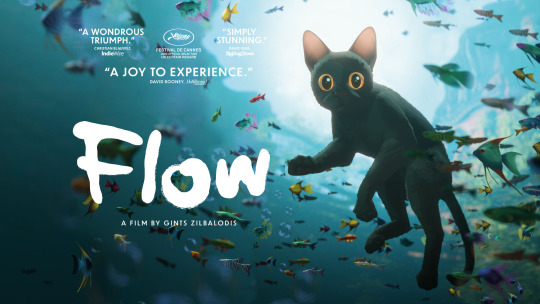
First, the film was made entirely using Blender, a free 3D software. For those of us in animation—especially small studios or solo creators with limited budgets—that’s incredibly inspiring. It proves that high-quality animated features can be created without massive funding or expensive software.
Second, due to budget constraints, the team had to work within tight timeframes and limited computing power, which meant they had to be extremely efficient. In interviews, the director explained that every element—modeling, lighting, textures—was designed only for what appeared in the frame. If something wasn’t visible, it wasn’t made. As a result, they had almost no deleted scenes. Every shot was essential.
These insights inspired me to consider using simple 3D modeling to test different angles. This would save time and help me feel more confident when drawing keyframes, especially regarding perspective or camera positions.
Another thing that stood out to me was Flow’s use of visual storytelling. Due to limited resources, the team maximized the storytelling power of every frame. Rather than relying on lengthy dialogue or flashy effects, they focused on conveying meaning visually. I’ve been thinking about how to do the same—using environment design and character performance to enhance the story, rather than over-explaining with dialogue. This also ties into my proposal’s core approach: expressing key concepts through visuals instead of spelling out themes with words.
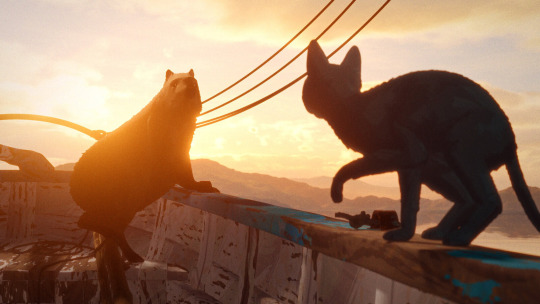
The production process behind Flow also made me reflect on how to better manage my own time and creative resources. In interviews, the director mentioned that they spent a lot of time upfront refining the story and storyboard. By making sure every shot had a narrative purpose, the production phase became more efficient. That really resonated with me—since I’m still in the concept development stage, locking down story beats and pacing early on could help me avoid unnecessary revisions later.
It also reminded me that when I work on keyframes and storyboards, I should identify the scenes that are crucial for character growth or emotional shifts and prioritize those. Instead of creating tons of concepts up front, I can focus first on what really matters to the story. This mindset might help me complete my Semester C goals more efficiently, while still delivering a coherent, polished project.
Lastly, during both class and tutorials, my professor suggested I consider the runtime of my project—whether it’s a short film or a full-length feature, a TV format or something else. Initially, I imagined a one-hour animated movie, but during the tutorial, my professor reminded me that pulling off something that long, solo, in a short time could be extremely challenging.
So now I’m exploring alternatives, like a TV-style short or even a standalone piece around 10–20 minutes. This kind of format would not only make the workload more manageable, but also give me space to fully develop my concept art and keep the project within my actual capacity—without burning myself out.
Reference
Swamp Jawn (2025). Flow: How He Made a Masterpiece on His Laptop. [online] YouTube. Available at: https://www.youtube.com/watch?v=KiF3UUzgCws [Accessed 05 Apr. 2025].
3DVF (2024). Flow: Exclusive Interview With Gints Zilbalodis! [online] YouTube. Available at: https://www.youtube.com/watch?v=YkncKAGzFH8 [Accessed 28 Feb. 2025].
Hebden (2025). Flow. [online] Hebden Bridge Picture House. Available at: https://hebdenbridgepicturehouse.co.uk/movies/flow [Accessed 05 Apr. 2025].
Marsh, C. (2024). ‘Flow’ Review: A Cat’s Life. The New York Times. [online] 21 Nov. Available at: https://www.nytimes.com/2024/11/21/movies/flow-review.html.
1 note
·
View note